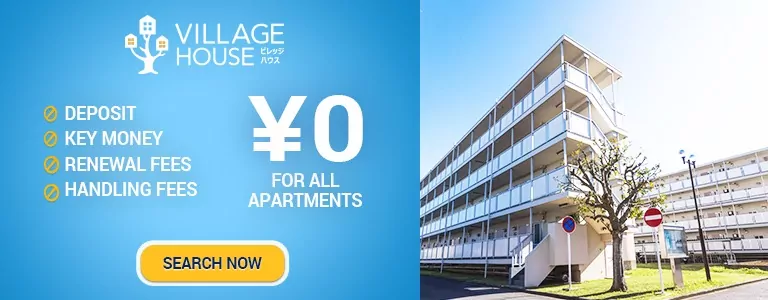An apartment screening process is defined as “the process of evaluating prospective tenants” and is either conducted by the landlord of the property or a real estate agency. Screening processes are a common practice when it comes to renting accommodation as it helps the landlord or real estate agency find an appropriate and suitable tenant for the property and ensures that the tenant is a good fit and a worthwhile investment.
Before a screening process can be conducted, prospective tenants first need to contact the landlord or real estate agent regarding a property they’re interested in. At Village House, for example, interested tenants may contact the agency by phone or through an online application form on their official website.

Personal Information
Part of the screening process involves procuring personal details from prospective tenants. In Japan, in order to begin the application progress, interested tenants need to present the following:
- A government issued form of ID that includes a photo (residence card, MyNumber card, passport, driver’s license etc.)
- Proof of income (income certificate, latest pay slip, salary statement etc.)
- Visa status if you’re not Japanese (copy of your visa, work permit etc.)
- Emergency contact (preferably someone in Japan but can also be an overseas contact)
- Bank account details for rent to be debited from (copy of bankbook, screenshot of online banking page, bank statement etc.)
Additionally, depending on the personal requirements of the landlord or real estate agency, potential candidates may also need to show:
- Insurance documents
- Credit history
- Criminal background check
- Past income tax statements

Upfront Payment
Be prepared to fork over at least a deposit – usually amounting to a month’s rent – in order to secure a lease. In Japan, upfront fees for a rental property can be exorbitant as it can include:
- Key money, which is like a gift or thank you to the landlord or real estate agency for letting you rent the property. This is usually not returned to the tenant. It’s usually a minimum of a month of rent.
- Brokerage fee
- Guarantor fee (anywhere from 10% to 100% of one month’s rent)
- Deposit (minimum one month’s rent)
- Fire insurance
In order to minimize upfront fees, organizations such as Village House have done away with over 90% of the above and promise no brokerage fees, no renewal fees, no key money, and depending on the property, no deposits. All that’s required is the current month’s daily rent plus next month’s rent, a possible contract fee, and a mandatory fire insurance fee.
Guarantor
Known as hoshonin in Japanese, a guarantor or co-signor is an individual who covers for the tenant if they are unable to pay rent or damage penalty fees. In most cases, a guarantor is needed to secure a lease in Japan.
Traditionally, a guarantor in Japan should be a Japanese individual who is employed full-time and is under the age of 65. Many new graduates would have their parents be their guarantor in this case. However, in lieu of this option, a guarantors can also be the tenant’s company – this is often the case for ex-pats coming to Japan for work, where the company will both sign the lease and be their employee’s co-signor.
A third option would be to sign with a guarantor company or hoshonin-gaisha. These companies will act as the tenant’s co-signor in exchange for a service fee, which can be anywhere from 10% to 100% of the tenant’s rent. There is also usually an annual renewal fee for their continued services. Many real estate agencies will have partnerships with these companies and offer them to their prospective clients to save them the trouble of looking for one on their own.
Date of Moving
The intended date of moving into the desired rental property is another important piece of information that the landlord or real estate agency needs to know in order to ensure that the previous tenant moves out in a timely manner and that the property is made ready for the new one.
At Village House, a newly signed tenant can move in immediately after the screening process is complete and approved, the preparation of the property is complete, and the contract is finalized. There is also no lottery system, so if the property of the interested is currently unoccupied, the new tenant can move in once everything is finalized.
Floor Plan
The size of a rental property will dictate the amount of rent tenants will pay, so to ensure that you stay within budget, it’s important to let the landlord or real estate agency know what floor plan is more suitable for you.
In Japan, floor plans are categorized with the following letters: L (living room), D (dining room/area), and K (kitchen). The smallest apartment would be categorized as 1R, meaning everything – living room, kitchen, dining area – is in one room.
Floor plans in Japan are also measured by tatami mats or jou. In the Kanto area, one tatami mat is around 180cmx90cm or 1.62 square meters, so 5.5jou would equal to 5 and a half tatami mats.
Related articles:
- First Time Renting Alone? Essential Questions to Ask Your Real Estate Agent
- Apartment Viewing for People Living Alone: What You Need to Check and How to Be Ideally Prepared!
- A Foreigner’s Guide to Clearing the Tenant Screening Process
- All the Documents You Need when Signing a Rental Contract and Applying for an Apartment



